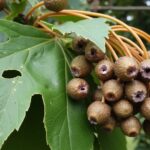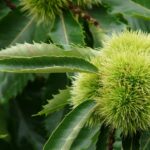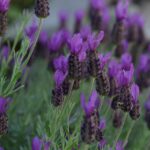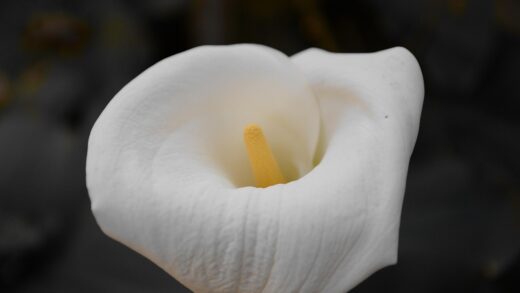The dog rose is an exceptionally hardy species, well-adapted to surviving cold winters throughout its native range. For gardeners in most temperate climates, a mature and well-established dog rose requires very little, if any, special preparation to make it through the winter months successfully. Its natural dormancy cycle allows it to withstand freezing temperatures and challenging conditions without human intervention. The primary focus of overwintering this rugged shrub is not about elaborate protection, but rather about ensuring the plant enters its dormant period in a healthy, robust state, which gives it the best possible foundation to endure the cold and emerge vigorous in the spring. Simple, sensible autumn care is usually all that is needed.
The inherent hardiness of the dog rose means that it can typically survive winter temperatures down to -20°C or even colder without significant damage. This resilience is a key part of its appeal, making it a reliable and low-maintenance choice for gardeners in colder regions. Unlike tender hybrid tea roses that often require extensive winter protection, the dog rose can be left to face the elements. Its tough, woody canes are capable of withstanding frost, snow, and ice, and the plant has a natural ability to shut down its metabolic processes to conserve energy during the coldest part of the year.
While mature plants are very self-sufficient, a little preparation in the autumn can help ensure they remain in peak condition. This includes a general cleanup around the base of the plant. Removing fallen leaves and other debris is good practice, as this material can harbor fungal spores and pest eggs that might otherwise overwinter and cause problems in the following season. This simple act of garden hygiene reduces the risk of disease carry-over and contributes to the overall health of the plant and the surrounding garden area.
It is also important to ensure the plant is well-hydrated before the ground freezes solid. If autumn has been particularly dry, it is beneficial to give the dog rose a few deep waterings in the weeks leading up to the first hard frost. This allows the plant to store adequate moisture in its tissues, which helps to prevent dehydration from cold, drying winter winds. A well-hydrated plant is significantly more resistant to winter injury than one that enters dormancy under drought stress.
The natural hardiness of dog rose
The remarkable winter hardiness of the dog rose is not an accident but a product of its evolution. Having adapted to a wide variety of climates, from the mild Mediterranean to the colder regions of Northern and Eastern Europe, it has developed a robust set of physiological mechanisms to cope with freezing temperatures. This innate toughness means that for most gardeners, wrapping, covering, or mounding soil over the plant—common practices for more delicate roses—are completely unnecessary and can sometimes even be detrimental by trapping moisture and encouraging fungal growth.
More articles on this topic
One of the key adaptations is its ability to enter a deep state of dormancy. As daylight hours shorten and temperatures drop in the autumn, the plant undergoes a series of hormonal changes. Growth ceases, the leaves change color and fall, and the plant’s metabolism slows down dramatically. During this period, the plant also undergoes a process of “hardening off,” where the chemical composition of its cell sap changes, increasing the concentration of sugars and other solutes. This effectively acts as a natural antifreeze, lowering the freezing point of the water within the cells and preventing the formation of damaging ice crystals.
The physical structure of the dog rose also contributes to its winter survival. The tough bark on its woody canes provides a layer of insulation, protecting the living tissues beneath from the worst of the cold. Its deep and extensive root system is another critical asset. While the top few inches of soil may freeze solid, the deeper roots remain in unfrozen ground, insulated by the soil and any snow cover. This healthy root system is the engine that will power the plant’s regrowth when spring arrives.
Understanding this natural resilience should give gardeners confidence. It means that you can appreciate the stark beauty of the dog rose’s thorny silhouette against a winter sky without worrying about its survival. It is a plant that truly looks after itself. The focus should be on supporting its natural cycle, not on fighting against it with unnecessary and often labor-intensive protection measures that are better suited for its more pampered relatives.
Preparing the plant in autumn
Autumn is a time of transition for the dog rose, as it shifts from active growth to winter dormancy. The preparations made during this season are aimed at supporting this natural process. One of the most important steps is to cease all fertilization by late summer. Applying fertilizer, especially those high in nitrogen, late in the season can encourage a flush of new, tender growth. This new growth will not have sufficient time to harden off before the first frosts and will be highly susceptible to winter damage, potentially creating entry points for disease.
More articles on this topic
As autumn progresses, it is generally best to resist the temptation to perform any major pruning. While it might seem tidy to cut the shrub back before winter, leaving the main structure of the plant intact provides some extra protection. The network of canes can help to trap insulating snow and can buffer the plant’s crown from harsh, drying winds. Any dead, damaged, or diseased wood can be removed at any time, but structural pruning should be saved for the late winter or early spring, just before new growth begins.
A critical aspect of autumn preparation is ensuring the area around the base of the plant is clean. Rake up and remove all fallen leaves from the dog rose and any nearby plants. This is one of the most effective non-chemical ways to control diseases like black spot and rust, as the fungal spores overwinter on this dead plant material. Disposing of this debris, either by burning it or putting it in the municipal waste rather than the compost bin, helps to break the disease cycle and ensures a healthier start for the plant next spring.
Finally, applying a layer of organic mulch around the base of the plant after the first light frost but before the ground freezes solid can be beneficial, particularly for younger plants. A 2-3 inch layer of wood chips, straw, or compost helps to insulate the root zone, protecting it from extreme temperature fluctuations. This mulch moderates the freeze-thaw cycles in the soil that can heave young plants out of the ground. It also helps to conserve moisture and will break down over time to enrich the soil.
Protecting young or vulnerable plants
While a mature dog rose is exceptionally hardy, a very young plant in its first winter may benefit from some light protection, especially in regions with particularly severe winters or where there is a lack of reliable snow cover. A young plant has not yet developed the extensive root system or the thick, woody canes of its mature counterparts, making it slightly more vulnerable to the stresses of cold and wind. The goal of any protection is not to keep the plant warm, but to shield it from drying winds and to moderate soil temperature fluctuations around its developing roots.
One of the simplest and most effective ways to protect a young dog rose is to apply a generous layer of mulch over its root zone in late autumn. After the ground has begun to cool but before it freezes hard, mound a loose, airy mulch such as shredded leaves, straw, or pine needles around the base of the plant to a depth of 4-6 inches. This layer of insulation will help to prevent the ground from freezing and thawing repeatedly, which can damage fine new roots.
In areas exposed to strong, persistent winter winds, a physical windbreak can be helpful to prevent the desiccation of the young canes. This can be as simple as erecting a small screen made of burlap or horticultural fleece on the windward side of the plant. The screen should be secured to sturdy stakes and should not touch the plant itself. This barrier disrupts the airflow, reducing the wind’s ability to draw moisture from the stems, which is a common cause of winter damage known as “winter burn.”
It is crucial to remove any heavy protection in the early spring as the weather begins to warm up. Leaving mulch mounded against the stems or windbreaks in place for too long can trap moisture, inhibit new growth, and create a favorable environment for diseases and pests. The mulch can be gently raked away from the plant’s crown and spread out over the surrounding soil. The aim is to protect the plant through the worst of the winter and then allow it to greet the spring with good air circulation and access to the warming sun.
Care during and after winter
During the depths of winter, a dog rose in dormancy requires virtually no care. It is best to simply leave it be and let it rest. One of the most important things to avoid is walking on the frozen ground around the base of the plant, as this can compact the soil and damage the dormant roots. If the plant is located near a walkway or driveway where salt is used for de-icing, take care to prevent salt-laden slush from being piled onto the root zone, as the high salt concentration can be toxic to the plant.
If there is heavy, wet snowfall, it can sometimes accumulate on the branches and cause them to bend or even break under the weight. If you notice a heavy load of snow on the shrub, you can gently brush it off with a broom to relieve the pressure on the canes. However, do not attempt to remove ice that has encased the branches, as this is more likely to cause damage. The canes are surprisingly flexible and can usually handle a coating of ice without any issue.
As winter draws to a close and spring approaches, the focus shifts to assessing the plant for any winter damage and preparing it for the new growing season. The ideal time for this is in late winter or very early spring, just as the leaf buds begin to swell but before they have fully opened. This is the perfect time to carry out the main annual pruning. Inspect the plant carefully and prune out any canes that have been damaged or killed over the winter. This winter dieback is easy to spot, as the affected wood will be brown or black and brittle, with no signs of green tissue underneath the bark.
After the post-winter pruning is complete, it is a good time to replenish the organic mulch around the base of the plant and make a single application of a balanced, slow-release fertilizer or a top-dressing of compost. This provides the plant with the nutrients it will need to fuel its initial burst of spring growth. As the soil warms and the days lengthen, the dormant dog rose will awaken, ready to produce a new season of healthy foliage, fragrant flowers, and nutritious hips, having successfully navigated the challenges of winter.


















